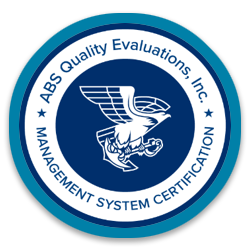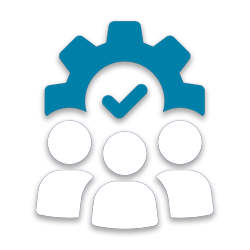ISO 45001 Overview

Following the internationally recognized ISO 45001 standard helps improve your occupational health and safety (OH&S) performance.
What is ISO 45001?
The ISO 45001:2018 standard is the only international and independent standard defining requirements for operational health and safety (OH&S) management systems, including guidance for use. Developed by independent national and international committees, ISO 45001 focuses on preventing unsafe behaviors and conditions that could lead to workplace accidents.
ISO 45001 Benefits
ISO 45001 takes a proactive approach to standardizing health and safety requirements for managers, employees and service providers in order to:
- Reduce the risks of occupational accidents and diseases and develop ways to control them
- Optimize uptime by helping organizations prevent business disruptions due to accidents
- Promote a culture of safety so employees understand how to stay healthy and feel confident in safety measures implemented in their work environment
- Enhance your reputation among clients, investors and other authorities by demonstrating compliance with health and safety laws, as well as adherence to the most internationally recognized standard
ISO 45001 Webinar
ISO 45001 and Remote Auditing Technologies
Understand the global framework for the world's leading standard for occupational health and safety management systems.

FAQs
Who should follow the ISO 45001 standard?
ISO 45001 standards were designed for all organizations looking to reduce workplace injuries and enhance workforce wellness. These OH&S standards are particularly valuable in high-risk industries like oil and gas, manufacturing and construction because of the framework in place for managing workplace safety effectively and demonstrating an organization’s commitment to employee wellbeing to all parties involved.
Who should follow the ISO 45001 standard?
What is the difference between ISO 45001 and OHSAS 18001? ?
While OHSAS 18001 focuses on controlling known hazards, ISO 45001 takes a more proactive approach to risk management. It’s a more comprehensive standard that helps identify and mitigate hazards before they occur. We recommend any organization who has not taken the transition from OHSAS 18001 to ISO 45001 to strongly consider doing so as soon as possible.
What is the difference between ISO 45001 and OHSAS 18001?
What are the essential elements of ISO 45001?
ISO 45001:2018 utilizes the Plan-Do-Check-Act (PDCA) method to systematically manage health and safety risks through key elements such as:
Plan
• Identify hazards
• Set clear objectives
• Develop procedures and processes
• Assign responsibilities
Do
• Implement the procedures and processes
• Conduct training
• Monitor and communicate performance
Check
• Compare performance data against objectives
• Identify areas of improvement
• Analyze incident reports
• Measure employee participation
Act
• Take corrective measures after “Check”
• Implement process improvements
• Communicate changes
• Continuously improve
What are the essential elements of ISO 45001?
What is the difference between ISO 45001 and OSHA?
ISO 45001 places a stronger emphasis on leader engagement, adds context analysis and risk-based thinking, and more closely aligns with other ISO management system standards like ISO 9001 (quality) and ISO 14001 (environment).
What is the difference between ISO 45001 and OSHA?

